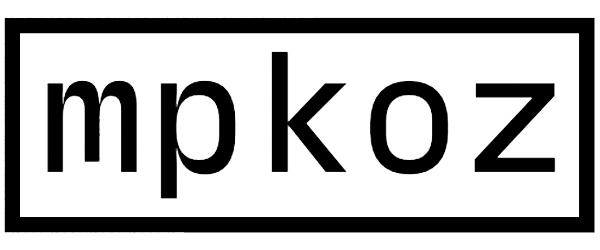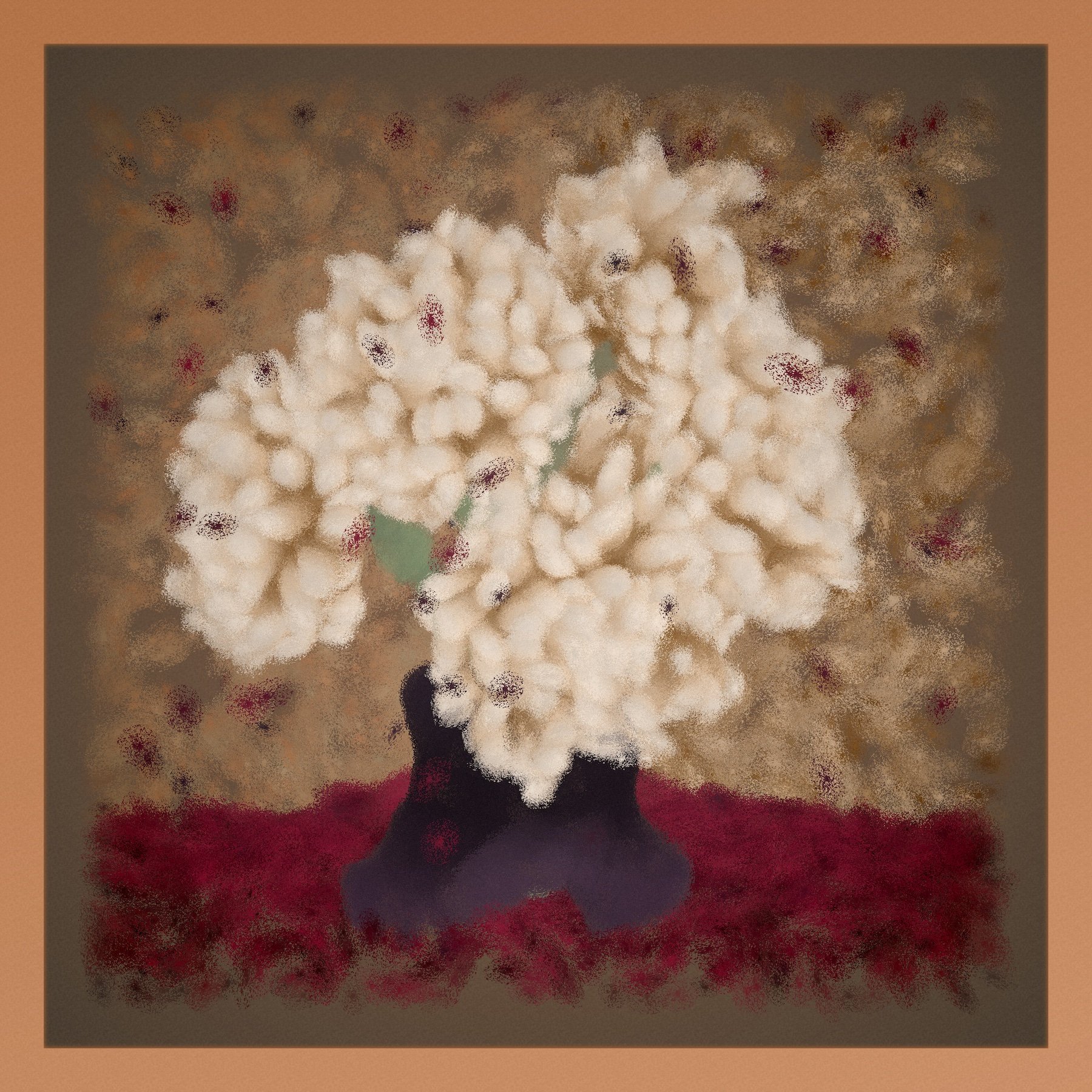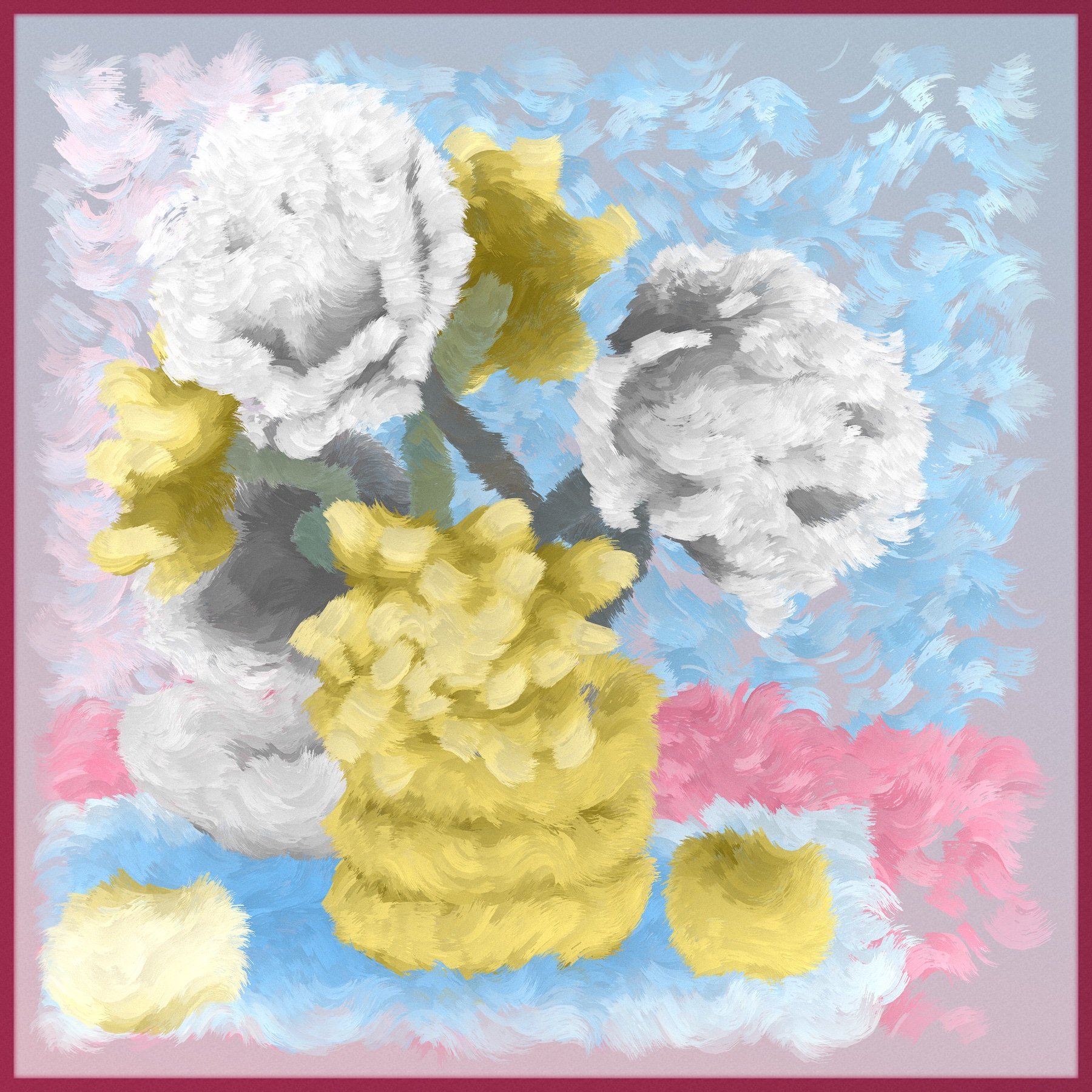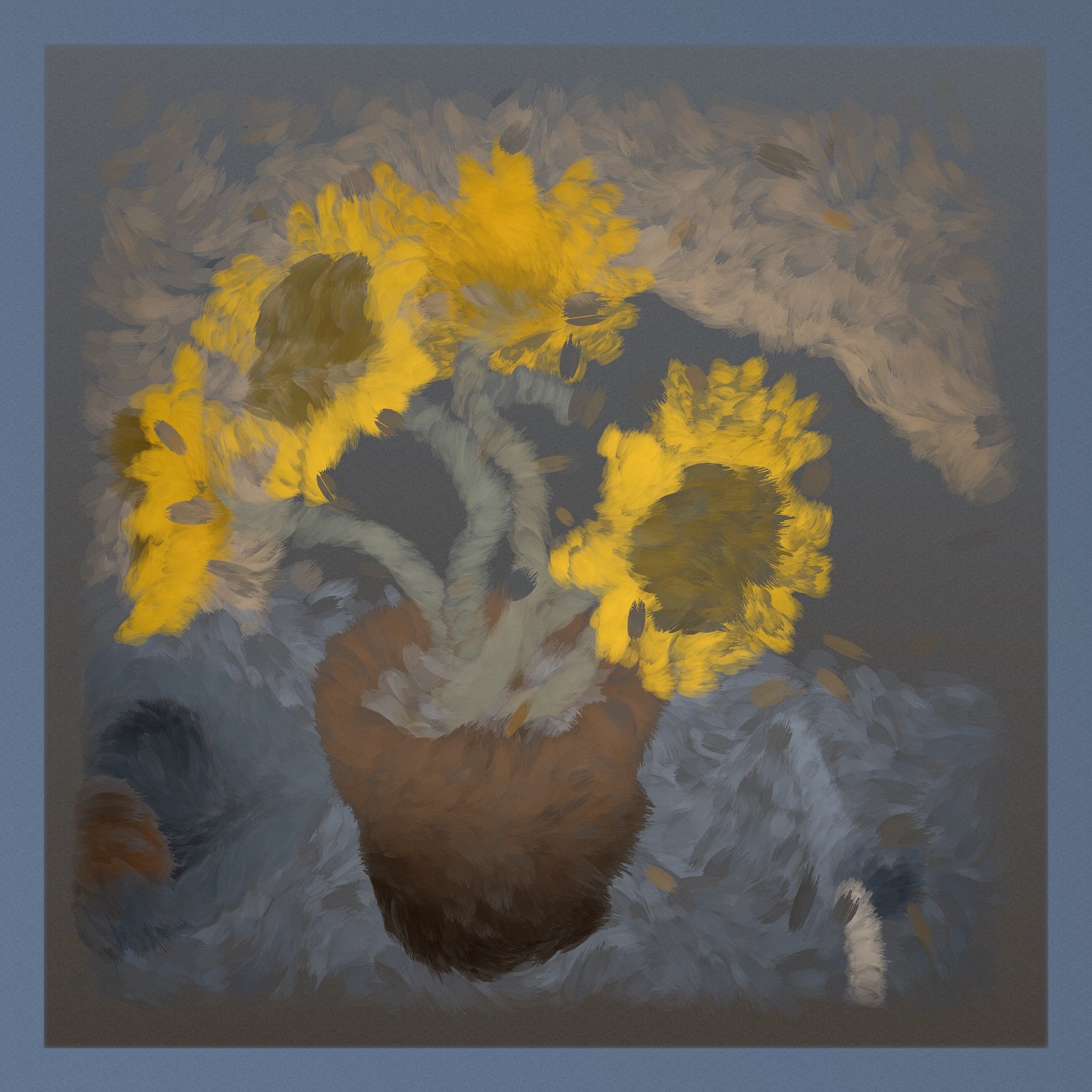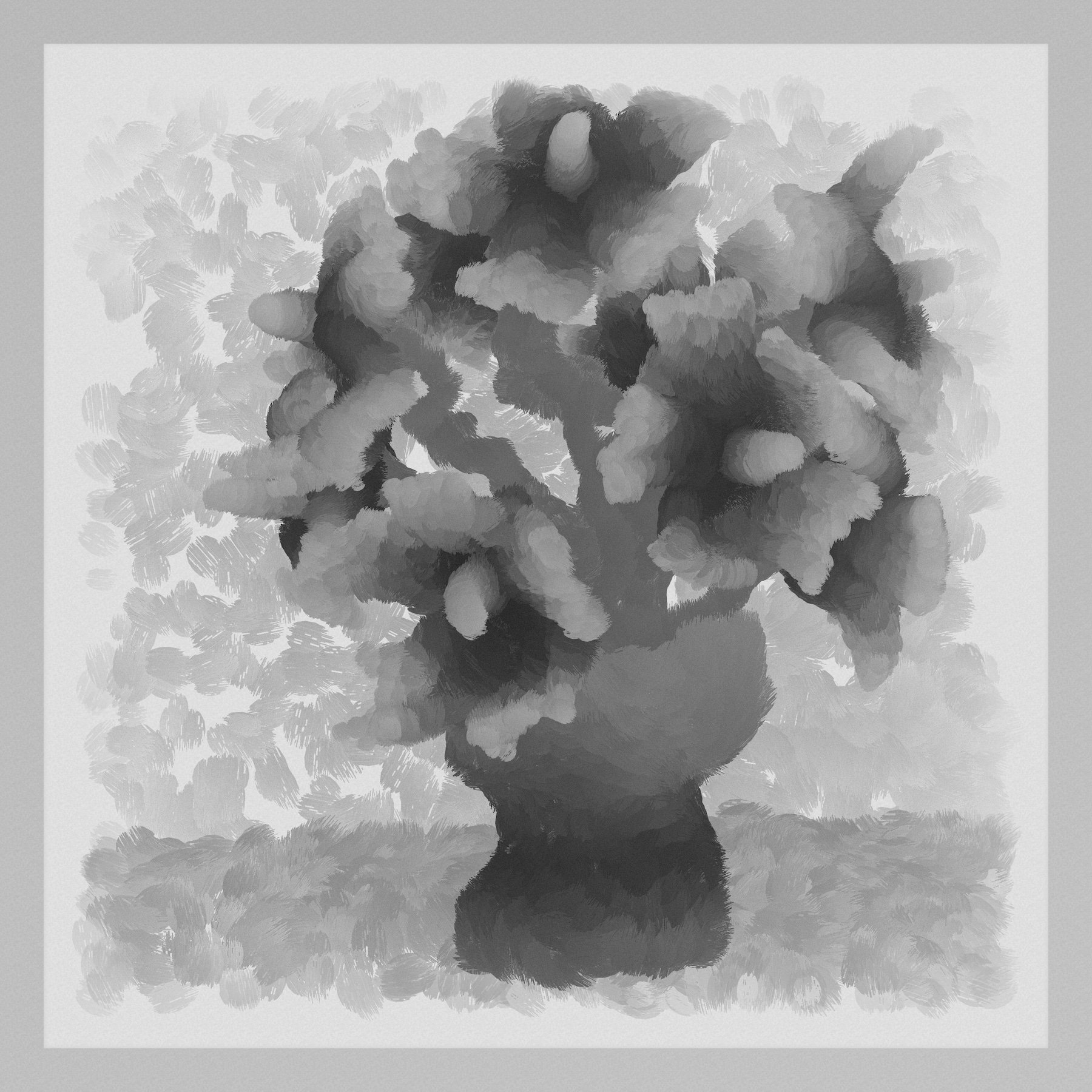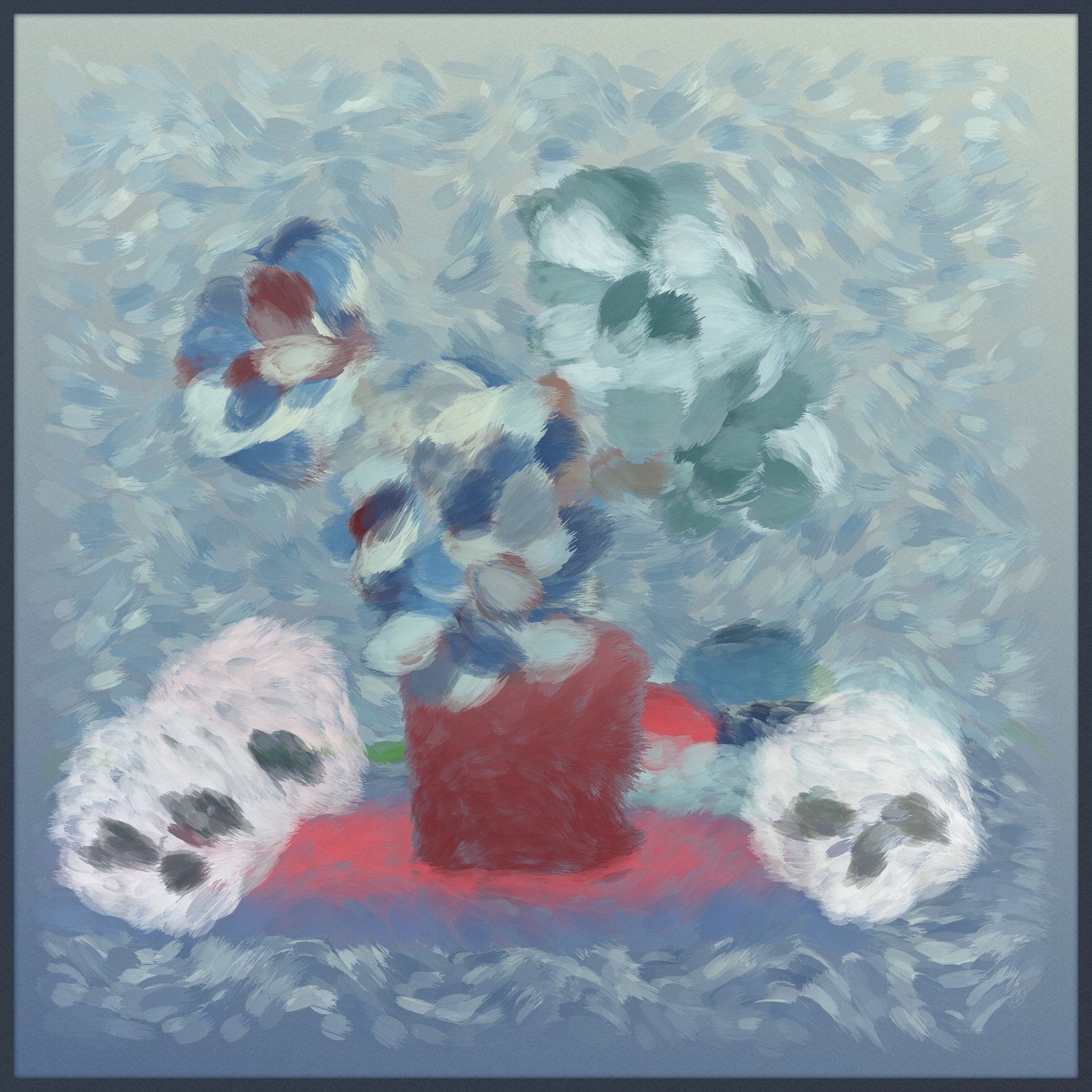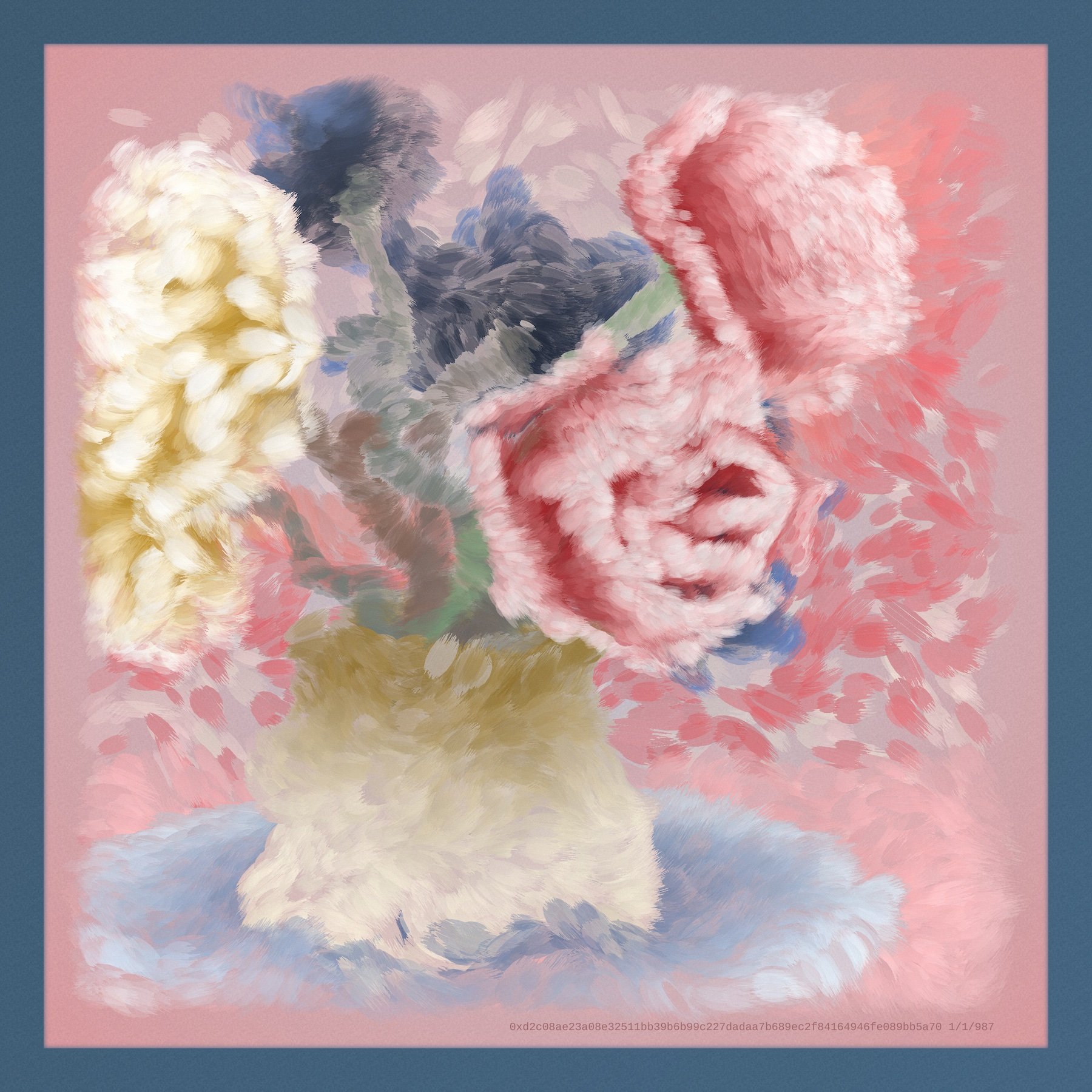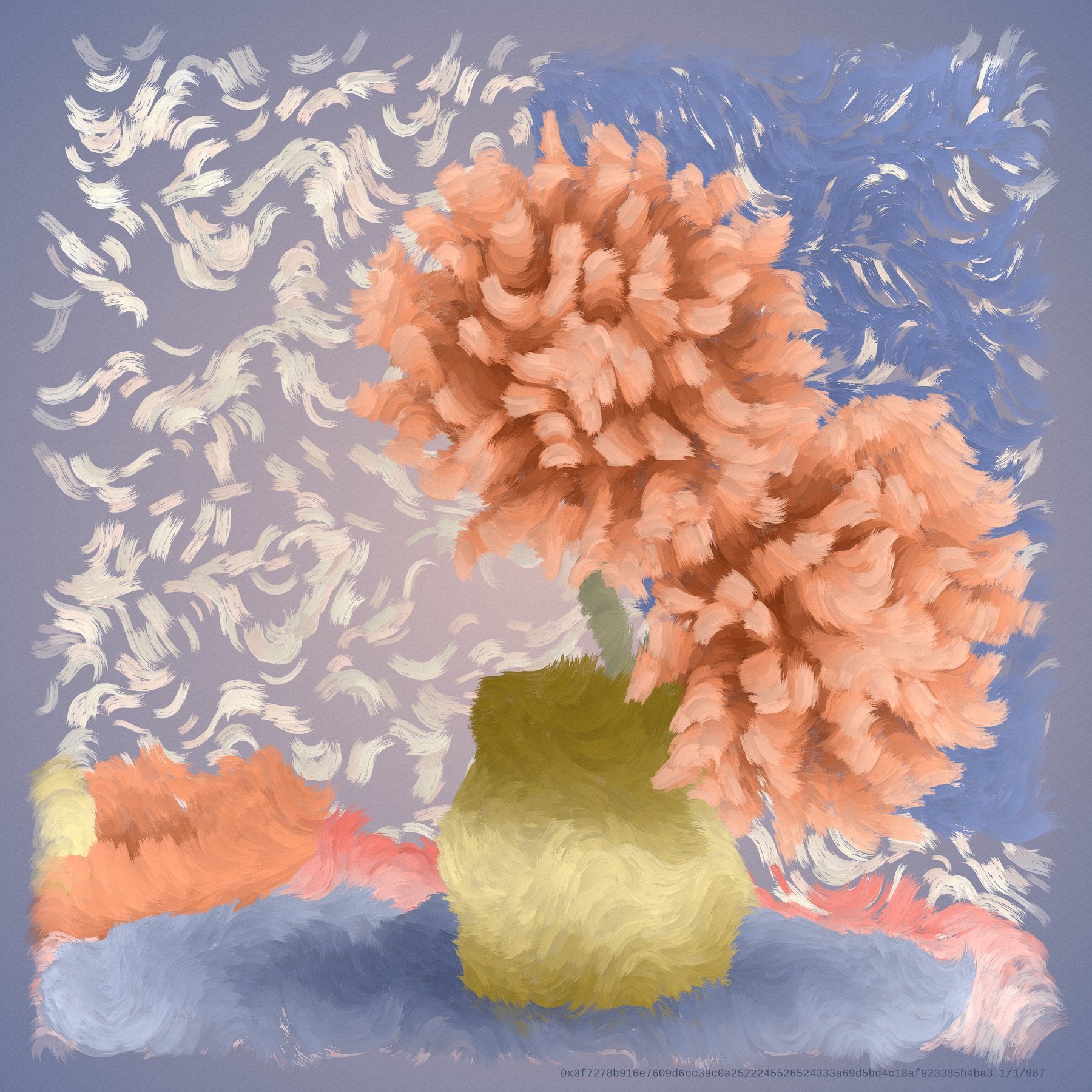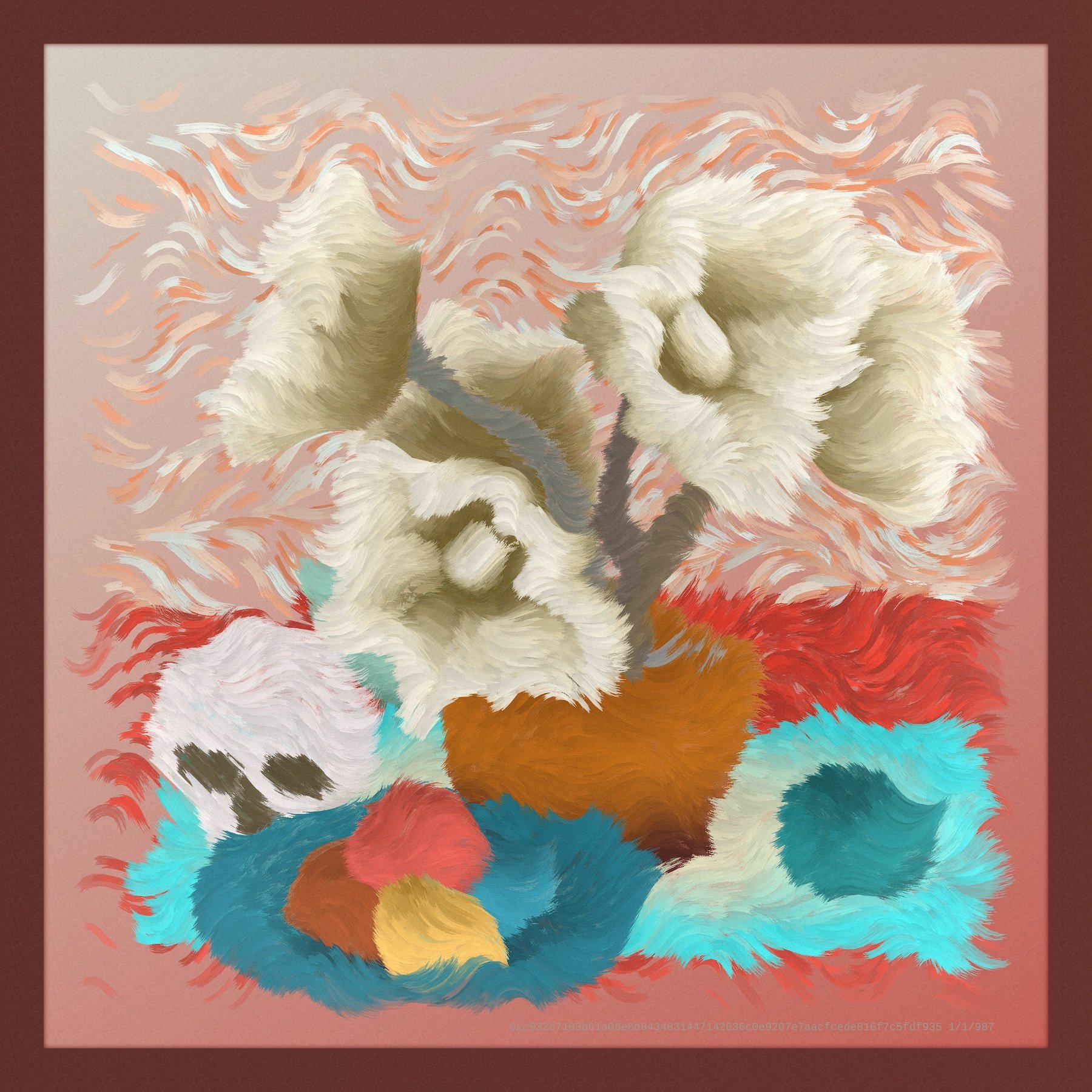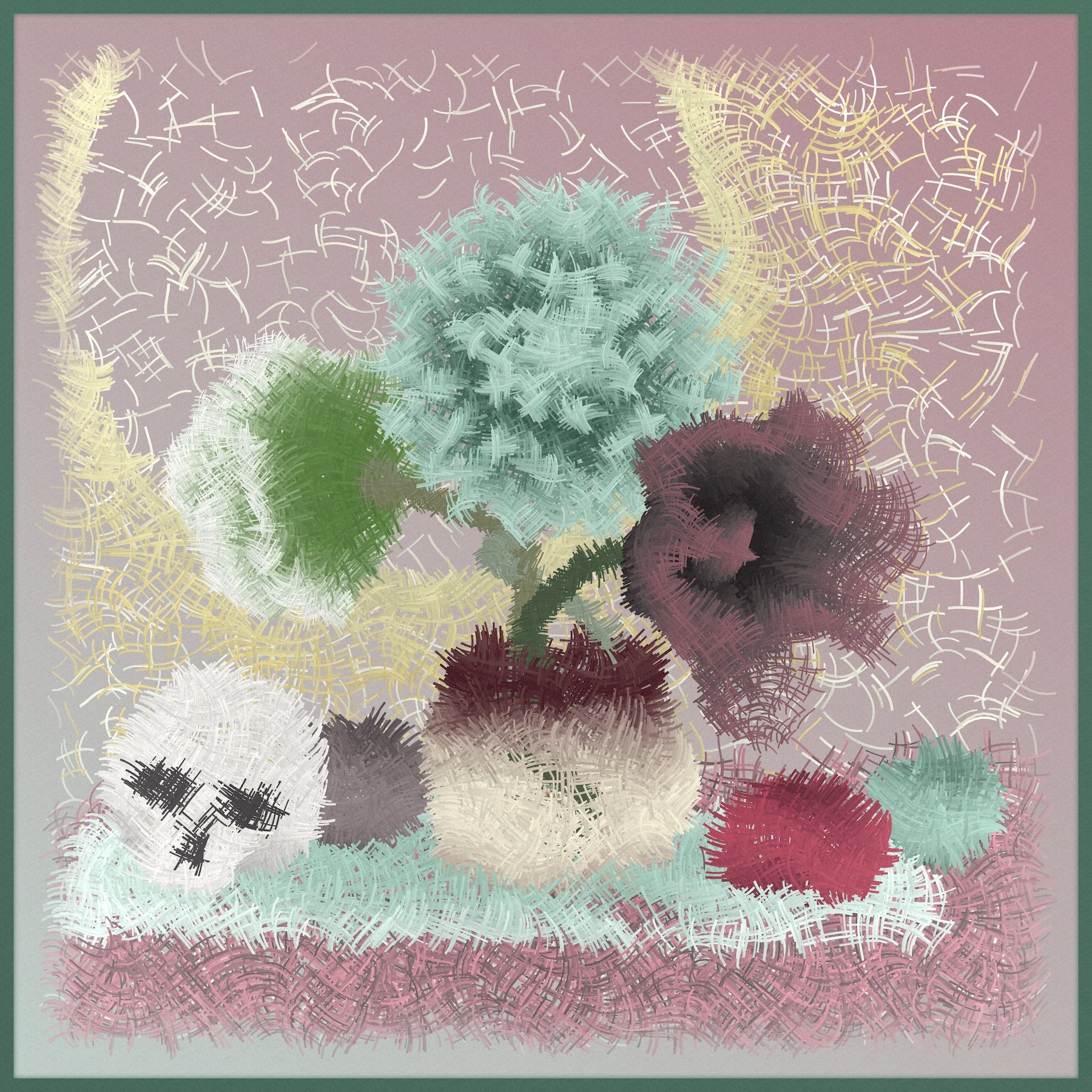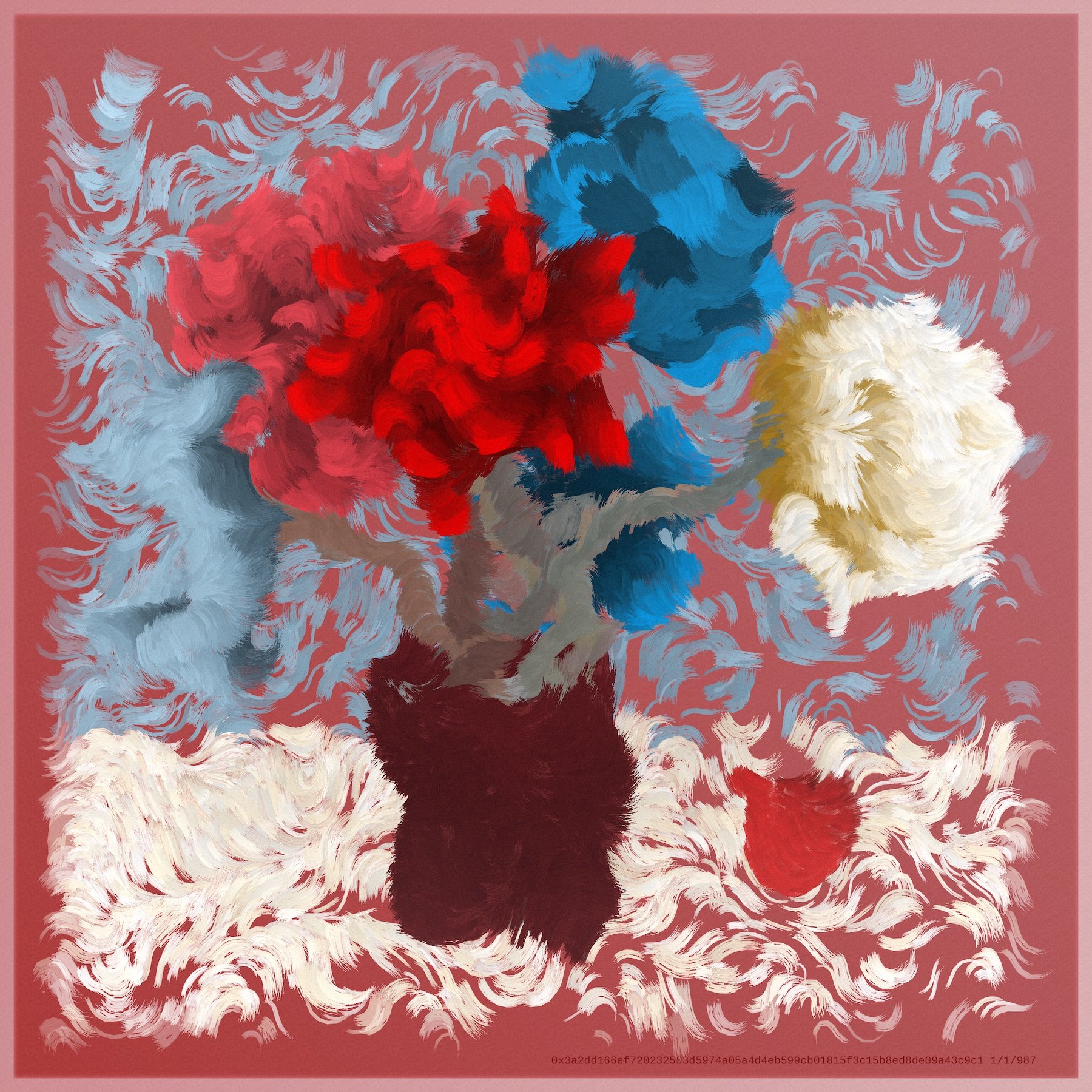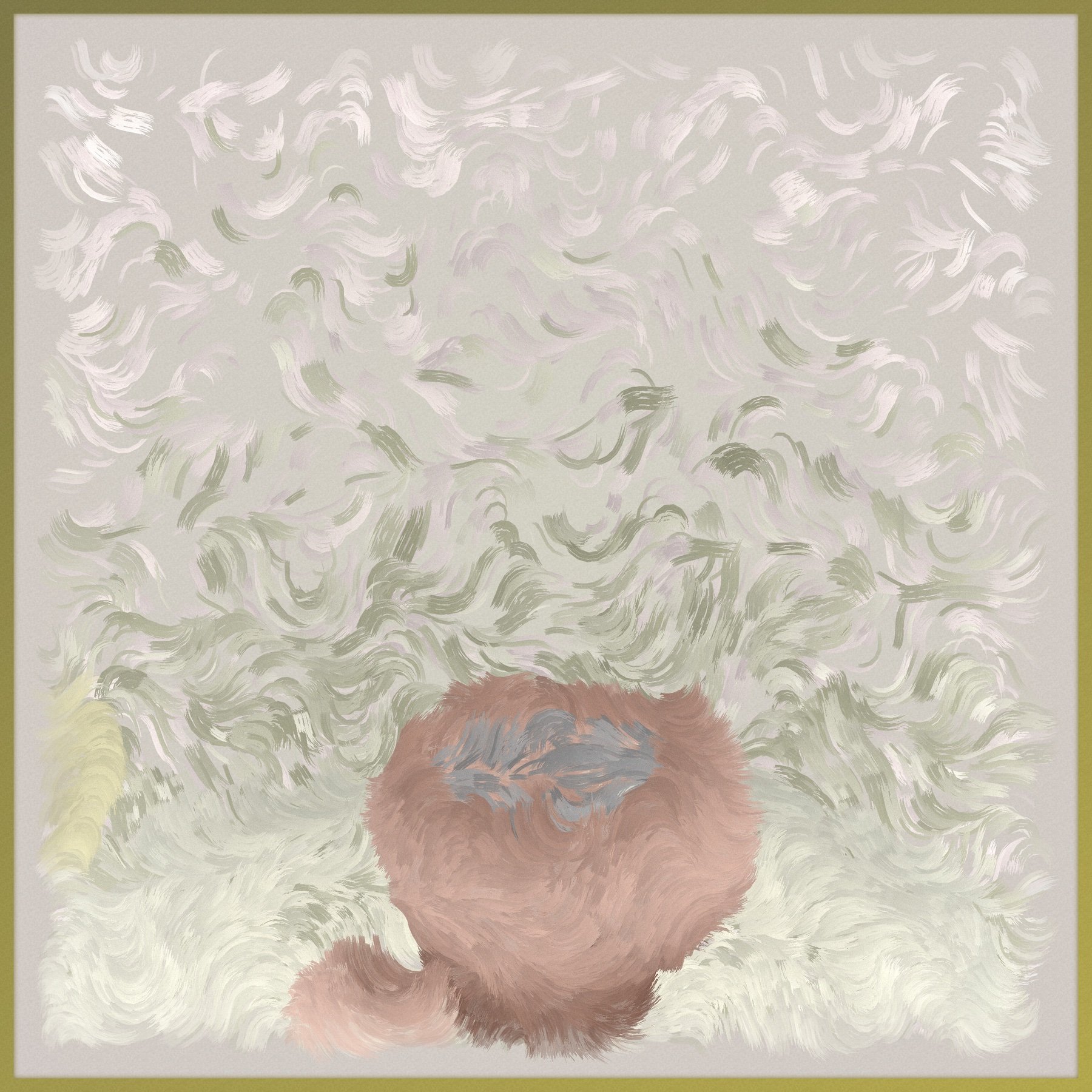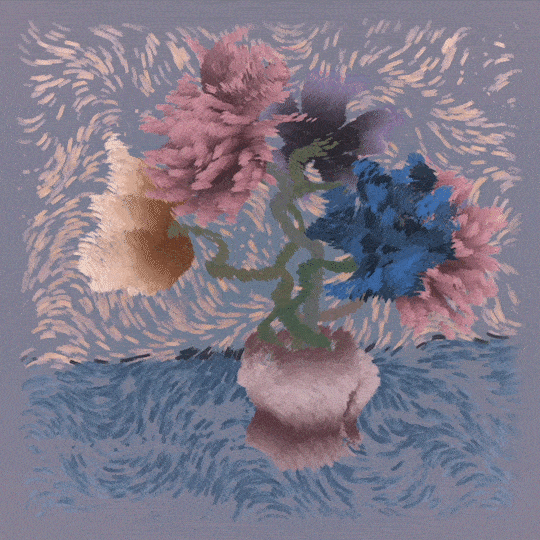Chimera
Background
Chimera is a fully on-chain generative art project consisting of 987 editions, published on the ArtBlocks platform. Each edition is an NFT minted on the Ethereum blockchain. The term "on-chain" means that each NFT points to the actual code responsible for rendering Chimera. That code is hosted on a block. This differs from most NFTs, which usually point to a media file stored on a third-party server.
Prior to purchasing, those that collected Chimera did not know what their edition would look like. Instead, the hash code (or "ID") generated by each transaction is used to drive the visual appearance of each piece. Because each transaction has a unique ID, every edition has an unrepeatable composition and distinctive group of traits, which combine to make an entirely unique piece.
Description
Chimera is a mutation, its genetics a merging of past and present.
New creative mediums almost always ingest those that came before. Pictograms and hieroglyphics turned into paintings, which eventually became moving images and photoreal graphics. Spoken words evolved into written text, eventually becoming complex screenplays, computer code, and a world of hyperlinks. Most mediums are not discarded, but combined or extended to incorporate new technology or ideas.
When a new medium comes into existence, the capabilities of both the artist and viewer increase in number. The potential subjects within said medium can grow in complexity as well, some fully dependent on the medium that holds them. Other subjects are timeless, popping in and out of multiple movements and genres throughout history. An example of the latter is still life. From ancient carvings through contemporary art, scenes of commonality, beauty, and metaphor have persisted. Traditionally viewed as a type of technical practice or meditation (the bottom of the “hierarchy of genres”), some examples of still life have gone on to be among the most important works in art history.
Chimera is a natural progression of still life. It is an old tradition in the very new medium of on-chain generative art, a movement that will have an enormous presence in the future. Chimera simultaneously reaches into the past while exploiting the capabilities of the present and seeks to represent a unique moment in time, a generation of art in between digital and physical realities, encapsulating where we came from and where we are going.
Technical
Chimera relies very heavily upon object-oriented programming architecture and polymorphism. In a general sense, every edition of Chimera is a unique point cloud with different classes defining where these points are located, what color they are, and how they behave. I will begin explaining the architecture of Chimera in reverse order, starting from the smallest and working towards the largest.
Chimera, mint #0
The most basic unit in Chimera is the point. Every edition has many points, usually upwards of one million. The points have several traits, like their position, color, and in some cases, velocity. Each point holds the defining traits of a brush stroke. When the point is created, each trait is sent to various buffers in a custom shader that is responsible for drawing the strokes. Multiple points are grouped into shapes. Shapes in Chimera are mostly just lines (with a few exceptions). Think of shapes as the string of a necklace, where the points are the beads. Most shapes start at some location and end at another, creating points as they go. The vase, for example, is composed of many linear shapes that trace themselves around a parameterized cone. Most of the flowers are composed of many linear shapes, where the thread starts at the base of the flower bulb and is sent shooting off in various directions and sine waves related to the flower they represent, eventually creating a petal.
These linear shapes are guided by the objects that spawn them. The "objects," as I refer to them, are more easily understood. A vase is an object, a sunflower is an object, a fruit is an object, a wall is an object. Sometimes multiple objects are grouped together by an even more general object. One example of this is a flower, which is composed of a stem object and a bulb object. As the main thread of the script creates objects, the objects define a set of rules pertinent to their embodiment. The objects then create many linear shapes to carry out those rules. As the shapes progress down their respective paths, they spawn points. The information stored in each point is then passed to the shader, which renders a brush stroke. So every visual feature of Chimera starts with a very general definition and cascades down to a very specific definition.
The other main element of Chimera is the graphics. I use instanced geometry to create every brush stroke, so it's the same geometry used over and over again, reducing draw calls. This allows me to draw many shapes. This geometry differs between different stroke styles, but for the most part are simple quads. Before the main thread gets started, I use an HTML canvas to create randomized, stroke-like, black and white textures which become a sort of alpha map for each quad. These textures are passed to the fragment shader, which discards pixels of each quad that are sampled in the black. This technique was pretty effective in creating a stroke-like effect without preloaded textures. In the vertex shader, the quads are stretched and bent around a 2D noise field that is generated using the screen-space coordinates of each vertex. Additionally, I face the quads towards the camera at all times using some matrix operations. I really like the effect the noise and the look-at creates: from every perspective, the composition looks flat and painted. This idea was one of the most foundational of the collection, and speaks to the overall theme of traditional two-dimensional artwork existing in a digital medium.
